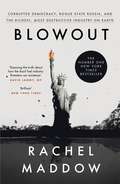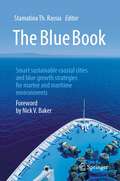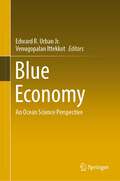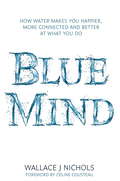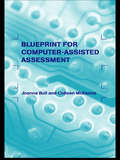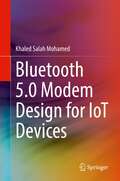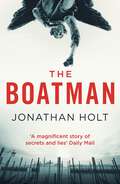- Table View
- List View
Blowout: Corrupted Democracy, Rogue State Russia, and the Richest, Most Destructive Industry on Earth
by Rachel MaddowTHE #1 NEW YORK TIMES BESTSELLERCorrupt? Yes. Unimaginably lucrative? Of course. But the enemy of democracy? Blowout is the oil and gas industry as we’ve never seen it before. Blowout is a blackly comic switchback journey with America’s most incisive political journalist, from Washington to Siberia and Equatorial Guinea, from deep within the earth’s crust to the icy Arctic seas. We witness the underground detonation of a nuclear bomb, an inept Russian spy ring, an international financial crisis, and murdered cows. And what it reveals is not just the greed and incompetence of Big Oil and Gas but why the Russian government hacked the 2016 U.S. election. Because Russia's rich reserves of crude have in fact stunted its growth, forcing Putin to maintain his power by spreading Russia's rot into its rivals, its neighbours, and the West's alliances.The oil and gas industry has polluted oceans and rivers but also polluted democracy itself – in developing and developed countries. It has propped up authoritarian thieves and killers. But being outraged at it is, according to Maddow, ‘like being indignant when a lion takes down and eats a gazelle. You can't really blame the lion. It's in her nature.’Blowout is our final wake-up call: to stop subsidizing oil and gas, to fight for transparency, and to check the influence of the world's most destructive industry. The stakes have never been higher. As Maddow writes, ‘Democracy either wins this one or disappears.’
The Blue Book: Smart sustainable coastal cities and blue growth strategies for marine and maritime environments
by Stamatina Th. RassiaThis volume offers a wealth of results written by experts from interdisciplinary fields, contributing on a diversity of topics targeting marine and maritime environmental sustainability in coastal and ocean-related areas. The reader will benefit from the diversity and breadth of topical coverage as well as concepts conveyed from a variety researchers. The book serves as an open knowledge platform combining many aspects of SDG #11 including naval architecture and marine engineering, ecology, biomedical informatics, public health, architecture engineering and building physics, nanotechnology as well as advanced technologies, innovation and related fields. The broad range of topics cover ecology, shipping, and health related issues. Specifically, the book presents chapters on the following: · Shipping and ecology · Topics of ocean wildlife and mega-fauna protection · Big Data and sustainable applications for healthy and safe coastal cities · Smart sustainable humanitarian assistance methods using large vessels · Smart coastal city tourist activity, mobility management · Urban climate condition mitigation · Historical analysis of the case of disease outbreaks onboard ships · Monitoring, simulating and decision making while developing housing at sea, such as in cruise-ships · Conducting feasibility assessment for outbreak prevention following real-time, systematic disease detection on cruise ships · Technological approaches for cruise ship disease propagation monitoring · Scenario testing for sensors and actuators deployment to prevent and mitigate epidemics on cruise ships, as well as methods for improving biological safety on ships using nanotechnology The book is expected to engage researchers in multidisciplinary areas as well as students and interested readers.
Blue Carbon Dynamics of the Indian Ocean: The Present State of the Art
by Abhra Chanda Sourav Das Tuhin GhoshThis book gives an overview of various aspects of blue carbon dynamics from each country bordering the Indian Ocean. Given the importance of the topic of blue carbon, it can be assumed that in near future, more and more researchers from the Indian Ocean countries will pursue environmental research in this domain. This book is a ready reference to all those who are interested to have a holistic understanding about the ground scenario of blue carbon in the Indian Ocean. There are many research institutes situated in the periphery of the Indian Ocean that are devoted to nurturing the new avenues of marine carbon research. Researchers and scholars interested in this domain will find this book provides a good overview, wherein all the necessary information on the status and functioning of these blue carbon ecosystems are detailed in a concise way. The book is also helpful to postgraduate students of ‘marine science’ or those who have a specialization in ‘marine biogeochemistry’ or ‘chemical oceanography’ to develop a basic understanding about the very concept of ‘blue carbon’ from the perspective of the Indian Ocean.
Blue-Collar Stratification: Autoworkers in Four Countries (PDF)
by William Humbert FormIn studying the impact of industry on class organization, social scientists have assumed that the effects of technological advance increase with time and that, as technology molds, dehumanizes, and alienates workers, the pressure mounts to change the system through political action. William H. Form tests these assumptions in his study. The author considers whether workers have more to do with one another as societies industrialize, whether they become more involved in organizations, and whether these involvements become distinctively similar, creating an organizational basis for a solidary working-class movement. To examine these questions, he chooses four countries (India, Argentina, Italy, and the U.S.) that vary in the extent of their industrial development. He then compares samples of skilled, semiskilled, and unskilled workers in order to ascertain how specific technologies to which they have been exposed affect their behavior in systems such as the work group, union, party, neighborhood, and nation.Originally published in 1976.The Princeton Legacy Library uses the latest print-on-demand technology to again make available previously out-of-print books from the distinguished backlist of Princeton University Press. These editions preserve the original texts of these important books while presenting them in durable paperback and hardcover editions. The goal of the Princeton Legacy Library is to vastly increase access to the rich scholarly heritage found in the thousands of books published by Princeton University Press since its founding in 1905.
Blue Economy: An Ocean Science Perspective
by Edward R. Urban Jr. Venugopalan IttekkotThe ocean is a major source of income for many coastal nations, particularly in the developing world. Economic benefits from the ocean in the long-term depend on its wise science and technology-based management. The intersection of science, technology, and economy are most obvious in nations' coastal zones. This book highlights the need for the application of ocean science and technology for best economic outcomes. It gives examples of ocean resources and the threats to them from climate change and other human interventions, as well as provides information on the available ocean research and observation tools to monitor their impact as well as on the related internationally available opportunities for capacity development.
Blue Economy in Indian Sundarbans: Exploring Livelihood Opportunities
by Abhijit Mitra Sufia Zaman Prosenjit PramanickThis book provides a cross-sectoral, multidisciplinary assessment of the major verticals of Blue Economy relevant to the mangrove ecosystem in Indian Sundarbans, which is a deltaic complex at the apex of Bay of Bengal. This book evaluates the feasibility of Blue Economy considering the natural resource base in this mangrove dominated deltaic complex.Chapter 1 discusses the need of expanding different marine and estuarine oriented verticals of Blue Economy as the land resources are gradually becoming depleted. Chapter 2 highlights the wide spectrum of biotic and abiotic resources of the Indian Sundarbans which can serve as the strong foundation of expanding Blue Economy in the region. Chapter 3 highlights several mangrove based livelihoods that are not only innovative, but may present new opportunities to initiate cottage industries. Chapter 4 highlights the threats associated with Blue Economy in Indian Sundarbans like, sea level rise, acidification of water, weather extremes, pollution, over-exploitation of natural resources, etc., along with ground-zero environmental data collated over three decades. Chapter 5 offers several solutions to combat the threats to regional Blue Economy emphasizing both technology and policy based management. The book attempts to align the proliferation of different sectors of Blue Economy in the framework of Indian Sundarbans.
Blue Economy of the Indian Ocean: Resource Economics, Strategic Vision, and Ethical Governance
by Ranadhir Mukhopadhyay Victor J. Loveson Sridhar D. Iyer P.K. SudarsanThe economic paradigms currently dominating the world are not sustainable. The threats from climate change, exploitation-based approaches to commerce, and the excess acquisition of resources loom large as well as the possibility of military flare-ups. Maintaining a balance between development and ecosystems, aspirations for growth, and the need for sustainability is a prescient challenge. The Indian Ocean Region (IOR) encompasses some of the poorest countries in the world and those that will bear the brunt of the negative impacts from climate change. This book explores the immense potential of the IOR and how best to maintain sustainable and responsible economic and strategic activities. The combination of science, innovation, and entrepreneurship will create a new blue economy business model, which has the potential to transform society. Based on critical analysis of the model and its practical applications, including risks as well as opportunities, the topics discussed range from food security, energy, and resilience to climate change, trade and investments, and improved maritime connectivity to tourism, poverty alleviation, and socioeconomic growth, encompassing a wide range of interests and expertise. FEATURES Examines the geo-politics, geo-resources, and geo-hazards of the IOR and identifies opportunities and methods to achieve success Covers a detailed assessment of available resources (fisheries, minerals, energy), threats such as pollution (plastic, acoustic, carbon, bio-invasion), geo-politics (maritime security, military invasion), and strategic vision (determining carrying capacity, ethical governance, and responsible ecosystem) of the Indian Ocean Analyzes the economics of the blue economy, the global scenario including the Pacific and Caribbean islands, and the aspect of the Chinese geo-political invasion in the Indian Ocean Inspires entrepreneurs to adopt new ways of creating economic benefits, reducing energy use, and increasing revenue while simultaneously helping the communities involved Discusses the threat and security perspectives of the IOR and the collective responsibility for a sustainable use of resources Crossing a wide range of interests and expertise, this book explores topics and ideas that will be essential to researchers and professionals in marine sciences, economics, business, geography, and political sciences. Graduate students in the same fields as well as any and all organizations that maintain a presence in the IOR will likewise find this book to be a valuable resource.
Blue Economy of the Indian Ocean: Resource Economics, Strategic Vision, and Ethical Governance
by Ranadhir Mukhopadhyay Victor J. Loveson Sridhar D. Iyer P.K. SudarsanThe economic paradigms currently dominating the world are not sustainable. The threats from climate change, exploitation-based approaches to commerce, and the excess acquisition of resources loom large as well as the possibility of military flare-ups. Maintaining a balance between development and ecosystems, aspirations for growth, and the need for sustainability is a prescient challenge. The Indian Ocean Region (IOR) encompasses some of the poorest countries in the world and those that will bear the brunt of the negative impacts from climate change. This book explores the immense potential of the IOR and how best to maintain sustainable and responsible economic and strategic activities. The combination of science, innovation, and entrepreneurship will create a new blue economy business model, which has the potential to transform society. Based on critical analysis of the model and its practical applications, including risks as well as opportunities, the topics discussed range from food security, energy, and resilience to climate change, trade and investments, and improved maritime connectivity to tourism, poverty alleviation, and socioeconomic growth, encompassing a wide range of interests and expertise. FEATURES Examines the geo-politics, geo-resources, and geo-hazards of the IOR and identifies opportunities and methods to achieve success Covers a detailed assessment of available resources (fisheries, minerals, energy), threats such as pollution (plastic, acoustic, carbon, bio-invasion), geo-politics (maritime security, military invasion), and strategic vision (determining carrying capacity, ethical governance, and responsible ecosystem) of the Indian Ocean Analyzes the economics of the blue economy, the global scenario including the Pacific and Caribbean islands, and the aspect of the Chinese geo-political invasion in the Indian Ocean Inspires entrepreneurs to adopt new ways of creating economic benefits, reducing energy use, and increasing revenue while simultaneously helping the communities involved Discusses the threat and security perspectives of the IOR and the collective responsibility for a sustainable use of resources Crossing a wide range of interests and expertise, this book explores topics and ideas that will be essential to researchers and professionals in marine sciences, economics, business, geography, and political sciences. Graduate students in the same fields as well as any and all organizations that maintain a presence in the IOR will likewise find this book to be a valuable resource.
The Blue Funnel Legend: A History of the Ocean Steam Ship Company, 1865–1973
by Malcolm FalkusFor more than a century Blue Funnel ships, managed from Liverpool by Alfred Holt and Company, held a unique place in Britain's shipping industry. Starting as pioneers of cargo liners between Liverpool and the Far East in 1866, the Company maintained a fine reputation built on its vessels, crews, shore staff, and management. This book traces the origins and evolution of the Line, charting its history through both world wars, its experiences in the great depression of the 1930s, and its vigorous response to the challenge of containerisation in the 1960s. Integrated into the text are discussions of the current roles of agencies and conferences, the singular management structure, and assessments of the parts played by key individuals.
Blue Labyrinth (Agent Pendergast #14)
by Douglas Preston Lincoln ChildA corpse, stiff with rigor mortis and bound in heavy ropes, has been dumped on the doorstep of FBI Special Agent Aloysius Pendergast. The murder has the hallmarks of the perfect crime – no witnesses, no motive, no evidence – save for one enigmatic clue: a piece of turquoise lodged in the stomach of the deceased. The gem leads Pendergast to an abandoned mine on the shore of California's desolate Salton Sea where an ingenious killer is determined to make him pay for the long-buried sins of his forefathers. But Pendergast already knows what is at stake, for the dead man left on his doorstep wasn't just anyone, it was his son.
The Blue Laser Diode: GaN Based Light Emitters and Lasers
by Shuji Nakamura Gerhard FasolIn 1993, the author, Shuji Nakamura developed the first commercially available blue and green light-emitting diodes. Now he has made the most important breakthrough in solid state laser techniques to date - the first blue semiconductor laser based on GaN. Here, Dr. Nakamura discusses the physical concept and basic manufacturing technology of these new blue light-emitting and laser diodes. he shows how this represents a new era in commercial applications for semiconductors, including displays, road and railway signalling, lighting, scanners, optical data storage, and much more. Moreover, Nakamura provides fascinating background information on the extraordinary realisation of an extremely successful concept of research and development. Of interest to researchers as well as engineers.
The Blue Laser Diode: The Complete Story
by Shuji Nakamura Stephen Pearton Gerhard FasolFrom the reviews of the first edition: "The technical chapters will be lapped up by semiconductor specialists keen to know more [...] the book includes fascinating material that answers the question: why did Nakamura succeed where many, much larger, research groups failed." New Scientist
Blue Mind: How Water Makes You Happier, More Connected and Better at What You Do
by Wallace J. NicholsWhy are we drawn to the ocean each summer? Why does being near water set our minds and bodies at ease? In Blue Mind, Wallace J. Nichols revolutionizes how we think about these questions, revealing the remarkable truth about the benefits of being in, on, under, or simply near water. Grounded in cutting-edge studies in neurobiology, cognitive psychology, economics, and medicine, and made real by stories of innovative scientists, doctors, athletes, artists, environmentalists, businesspeople and lovers of nature - stories that fascinate the mind and touch the heart - Blue Mind will awaken readers to the vital importance of water to the health and happiness of us all.
The Bluebeam Guidebook: Game-changing Tips and Stories for Architects, Engineers, and Contractors
by Rachel Attebery Jason HascallExpert tips for the last piece in the paperless puzzle The Bluebeam Guidebook offers comprehensive coverage of the industry’s leading PDF tool to help AEC professionals adopt a more efficient digital workflow. With desktop, mobile, and server-based products, Bluebeam makes collaboration and document coordination seamless, and provides a perfect complement to BIM software. This book shows you how to push the boundaries and discover the software’s true capabilities. Written expressly for working AEC professionals, this book offers tips, tricks, and ideas that cater to industry-specific needs. Expert instruction and step-by-step guidance helps you get started quickly, and case studies feature users from firms such as Kiewit, Populus, Sundt Construction, and more to show you how Bluebeam is quickly becoming a critical component of design and construction. Master the industry’s leading PDF software and alternative to Adobe Acrobat Create, edit, and markup documents in a way that suits the architecture and engineering workflow Learn how major AEC firms have transitioned seamlessly to digital workflows Integrate Bluebeam into estimating, quality control, field applications, and more The days of file boxes and paper reams are quickly coming to a close. The transition to paperless has been a boon for the AEC industry, in which collaboration and document sharing is central to getting the job done. BIM has revolutionized the design process, and Bluebeam offers that same level of functional innovation for the document side of every project. For AEC professionals seeking a better way to get things done, The Bluebeam Guidebook is your ultimate guide to everything Bluebeam can do for you.
The Bluebeam Guidebook: Game-changing Tips and Stories for Architects, Engineers, and Contractors
by Rachel Attebery Jason HascallExpert tips for the last piece in the paperless puzzle The Bluebeam Guidebook offers comprehensive coverage of the industry’s leading PDF tool to help AEC professionals adopt a more efficient digital workflow. With desktop, mobile, and server-based products, Bluebeam makes collaboration and document coordination seamless, and provides a perfect complement to BIM software. This book shows you how to push the boundaries and discover the software’s true capabilities. Written expressly for working AEC professionals, this book offers tips, tricks, and ideas that cater to industry-specific needs. Expert instruction and step-by-step guidance helps you get started quickly, and case studies feature users from firms such as Kiewit, Populus, Sundt Construction, and more to show you how Bluebeam is quickly becoming a critical component of design and construction. Master the industry’s leading PDF software and alternative to Adobe Acrobat Create, edit, and markup documents in a way that suits the architecture and engineering workflow Learn how major AEC firms have transitioned seamlessly to digital workflows Integrate Bluebeam into estimating, quality control, field applications, and more The days of file boxes and paper reams are quickly coming to a close. The transition to paperless has been a boon for the AEC industry, in which collaboration and document sharing is central to getting the job done. BIM has revolutionized the design process, and Bluebeam offers that same level of functional innovation for the document side of every project. For AEC professionals seeking a better way to get things done, The Bluebeam Guidebook is your ultimate guide to everything Bluebeam can do for you.
A Blueprint for Computer-Assisted Assessment
by Joanna Bull Colleen McKennaThe rapid development and integration of computer-assisted assessment (CAA) in mainstream post-compulsory educational institutions today make this an exciting and invaluable reference text. It provides a practical, research-based guide on a subject that is becoming increasingly important as educational assessment changes and grows.The book addresses theory and practice, offering a comprehensive evaluation of many key aspects of CAA such as: * question and test design, scoring and analysis, and feedback and integration with other assessment methods* the role of CAA in feedback processes* wider use of technology to support and enhance assessment* technical, operational and support issues.The authors present a lucid,balanced analysis of the strengths and weaknesses of CAA. This text will appeal to all those involved in higher or further education who wish to model their CAA systems on the best practice available.
A Blueprint for Computer-Assisted Assessment
by Joanna Bull Colleen McKennaThe rapid development and integration of computer-assisted assessment (CAA) in mainstream post-compulsory educational institutions today make this an exciting and invaluable reference text. It provides a practical, research-based guide on a subject that is becoming increasingly important as educational assessment changes and grows.The book addresses theory and practice, offering a comprehensive evaluation of many key aspects of CAA such as: * question and test design, scoring and analysis, and feedback and integration with other assessment methods* the role of CAA in feedback processes* wider use of technology to support and enhance assessment* technical, operational and support issues.The authors present a lucid,balanced analysis of the strengths and weaknesses of CAA. This text will appeal to all those involved in higher or further education who wish to model their CAA systems on the best practice available.
Bluetongue Viruses (Current Topics in Microbiology and Immunology #162)
by Polly Roy Barry M. GormanBluetongue viruses (BTV) cause diseases that have serious economic consequences in ruminants (sheep, cattle) in many parts of the world. The incidence of bluetongue disease affects the international movement of animals and germ plasm. Although the etiological agent of the disease was isolated in 1900 and preliminary biochemical characterizations were pub lished as early as in 1969, most of the current understanding of the molecular biology, biochemistry, and genetics of BTV has evolved only recently. Triggered by the modern techniques of molecular biology, genetics, and immunology, BTV research has experienced an information explosion in the past 10 years. However, much of this information is scattered throughout an extensive literature. It is therefore an appropriate time to meld this together into a reference book. This book includes compre hensive information on BTV research provided in articles contributed by researchers from around the world. It covers what is known about the molecular structure of the virus and the current understanding of its biology, evolution, and relationships with its invertebrate and vertebrate hosts (infection, immunity, and pathogenicity).
Bluetooth 5.0 Modem Design for IoT Devices
by Khaled Salah MohamedThis book provides an introduction to Bluetooth technology, with a specific focus on developing a hardware architecture for its modem. The major concepts and techniques involved in Bluetooth technology are discussed, with special emphasis on hardware mapping. The book starts simply to allow the reader to master quickly the basic concepts, before addressing the advanced features. This book differs from existing content in that it presents Bluetooth Transceiver architecture suitable for implementation in an FPGA for IoT Devices. It will examine several digital algorithms for modulation and demodulation of Bluetooth signals, locking on the carrier phase, and synchronizing the symbol. Many of these previously analog designs have been translated to the digital domain.
Bluetooth Security Attacks: Comparative Analysis, Attacks, and Countermeasures (SpringerBriefs in Computer Science)
by Keijo Haataja Konstantin Hyppönen Sanna Pasanen Pekka ToivanenBluetooth technology has enjoyed tremendous success, and it's now employed in billions of devices for short-range wireless data and real-time audio or video transfer. In this book the authors provide an overview of Bluetooth security. They examine network vulnerabilities and provide a literature-review comparative analysis of recent security attacks. They analyze and explain related countermeasures, including one based on secure simple pairing, and they also propose a novel attack that works against all existing Bluetooth versions. They conclude with a discussion on future research directions. The book is appropriate for practitioners and researchers in information security, in particular those engaged in the design of networked and mobile devices.
BMVC91: Proceedings of the British Machine Vision Conference, organised for the British Machine Vision Association by the Turing Institute 24–26 September 1991 University of Glasgow
by Peter MowforthLewis Carroll once wrote a story about a king who wanted a very accurate map of his kingdom. The king had a pathologically fastidious eye for detail and consequently decided that the map was to be produced at a scale of 1:1. The scribes dutifully set to and, in time, the map was made. The map carried details of every tree, every rock and every blade of grass throughout the entire land. The problem occurred when they tried to use -it. First of all, the map was extraordinarily difficult to open out and line up with the countryside. Its sheer bulk meant that it took whole armies to carry it and a great host of bureaucrats and technicians to maintain the information. Such was the detail of the map that as soon as the wind blew strongly, whole sections needed to be redrawn. What was worse was that all the farmers protested because the map completely cut out the light from the sun and all the crops died. Eventually the howls of protest became so strong that the king was forced to take action. He did away with the old paper copy and decided to use the kingdom itself as the map. All lived happily ever after. There are, at least, two morals to this tale. First, you are almost certainly doomed to failure if you do not get the representation of the problem right.
The Boatman (The Carnivia Trilogy #1)
by Jonathan HoltA superb conspiracy thriller set in Venice, from a Sunday Times bestseller. ********They found the woman's body on the steps of a church, washed up by Venice's winter tides. A tattoo on her wrist matched graffiti in an abandoned hospital, not used since the Second World War. It's Captain Kat Tapo's first murder case, and she'll do anything to get to the truth. But as the hunt for the killer intensifies, she discovers secrets from Italy's dark wartime past that will put her in great danger... This is the first novel in a trilogy of stylish and intelligent thrillers set in Venice from Jonathan Holt who, under the name J.P. Delaney, is also the author of the Sunday Times bestselling psychological thrillers The Girl Before and The Perfect Wife. Previously published as The Abomination. ********Reviews for The Carnivia Trilogy: 'Genuinely thrilling... An illuminating portrait of a particular world' Literary Review. 'Tense and mind-bending' Daily Telegraph. 'Breathtaking... A truly haunting glimpse into a mysterious shadow world' New York Times. 'Impressive... Venice is a magnificent backdrop for a story of secrets and lies' Daily Mail. 'A cracking, upmarket thriller... A rare entertainment for the thinking deckchair reader'Saga Magazine. What readers are saying about The Carnivia Trilogy: 'Superb – an exciting tale involving people smuggling, the Catholic Church and US intelligence operatives... A compelling story which will appeal to readers who enjoy a mix of conspiracy theory and cover-up' Amazon Reader. 'An unravelling of several interconnected plot strands with action and twists that never stop, but at a deeper level Holt also engages with human rights and gender issues... This is a "can't put it down" novel' Amazon Reader. 'The detailed reconstruction of the setting in Venice is fabulous and is equalled both by characterisation and plot... Gripping and thrilling... and distressingly possible' Amazon Reader. 'Fabulously descriptive, intriguing, fast paced... A must-read for anyone who enjoys a good thriller that is well researched and excellently written' Amazon Reader. 'Fast paced, good characters and interesting mix of plot strands. Each book in the trilogy can be read as a stand alone, but reading all of them rounds off the story strands nicely' Amazon Reader.
The Boatyard Book: A Boatowner's Guide To Yacht Maintenance, Repair And Refitting
by Simon JollandsThe Boatyard Book is a practical, comprehensive reference manual that provides sensible, accessible advice for boatowners on planning and carrying out annual maintenance, repairs, upgrades and refits of sailing yachts and motorboats, up to 20 metres in length. Beginning with all the information owners will need to care for their boat, including how to budget and plan tasks to be done through the year, The Boatyard Book goes on to help them choose the best boatyard for their needs, then provides essential how-to reference material and ideas for a comprehensive range of projects large and small to be carried out ashore. There's advice and tips from highly respected boatyard owners, specialists and surveyors, as well as from the author's own 25 years' experience of boat ownership, all fully illustrated with step-by-step photos and illustrations. Topics covered include: - laying up - hull and deck care - mast and rigging - sail care - engines - electrics - maintenance of plumbing and gas systems - more complex projects, including re-wiring a boat, overhauling an engine, how to treat osmosis and how to go about a complete refit. This is a book to be kept at the yard, or on the boat, and used time and time again by those who are either happy to keep things ticking along with the minimum of effort or by those who want to get stuck into bigger projects.
Boden, Bodenfeuchte und Kleinklima als Grundlage für Bewässerungen (Schriftenreihe des Österreichischen Wasserwirtschaftsverbandes #3)
by Bernhard RamsauerBöden Deutschlands, Österreichs und der Schweiz: Ein Bildatlas
by Holger Joisten Luise Giani Nils Kochan Dieter Kühn Daniela Sauer Peter Schad Herbert SponagelBöden sind eine Lebensgrundlage der Menschheit. Sie kennenzulernen ist nicht nur wichtig, sondern auch außerordentlich faszinierend. Dieser Bildatlas zeigt die Vielfalt unserer Böden, erklärt ihre Entstehung, ihre Eigenschaften, ihre Gefährdung und wie wir sie schützen können.200 Bodenprofile werden mit charakteristischen Boden- und Landschaftsbildern vorgestellt, mit detaillierten Beschreibungen erläutert und durch Analysendaten ergänzt. Jedes Profil wird nach der Bodenkundlichen Kartieranleitung (KA5) boden- und substratsystematisch eingeordnet. Auch werden die Bezeichnungen dieser Böden nach der internationalen „World Reference Base for Soil Resources“ (WRB) angegeben. Zahlreiche Karten zeigen die Verbreitung von Bodenregionen und Bodenklassen. Darstellungen der Abfolge der Böden in der Landschaft (Catenen) ordnen die Böden in ihre Umgebung ein. Zum besseren Verständnis sind wichtige bodenkundliche Sachverhalte in Einführungskapiteln anschaulich erklärt.DiesesBuch ist das Werk von 44 Autorinnen und Autoren sowie sieben Herausgebern, die ihr umfangreiches Experten- und Regionalwissen eingebracht haben. Es richtet sich sowohl an ein Fachpublikum, an Lernende und Lehrende, als auch an diejenigen, die sich bisher nicht mit Böden beschäftigt haben, die jedoch an der Vielfalt unserer Böden, ihrer Schönheit und ihrem landschaftsbezogenen Vorkommen interessiert sind.
